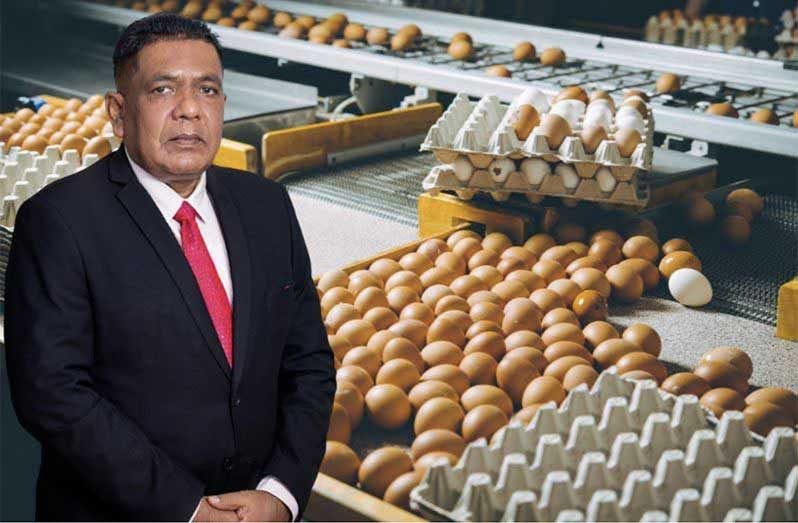–Mustapha says, spotlights plans for private sector investments, construction of tunnel houses in Pakuri Village
WITH Guyana looking to boost its production of hatching eggs, the country has set its sights on, and is tapping into, Caribbean markets to expand its local reach in not only becoming self-sufficient but meeting the demands of the region.
This was recently disclosed by Agriculture Minister, Zulfikar Mustapha, who, while speaking to reporters on the sidelines of an event, shared that construction works have already begun to clear lands in Pakuri Village in Region Four (previously known as St Cuthbert’s Mission) to facilitate tunnel houses.
“We are now moving to do a massive investment with the private sector with hatching-egg production. The tunnel houses that we will be using, there are on the way to Guyana, and the project will be happening in Pakuri. And land clearing has already started,” Minister Mustapha said.
The project would be one of the largest of its kind in the country and will satisfy the demands of the local market and the local poultry producers.
“In a very short space of time you will see massive transformation in that sector. As I am speaking also, we have already continued to expand in terms of hatching eggs that we had before, but as I said, we will be investing in terms of being self-sufficient in Guyana. That is, we are using approximately $53 million hatching eggs annually. I am hoping with this project that we are about to launch, that we will surpass that and export to the Caribbean markets.”
In 2024 Guyana had tripled its hatching eggs production. Guyana had imported nearly 53 million eggs annually at a cost of over $350 million.
To reduce this dependency, the country launched a hatching egg production programme in 2023 with a private partnership, resulting in the production of 27,000 eggs last year at the broiler breeder facility on the East Bank corridor. This facility was established to reduce the reliance on imported hatching eggs.
Back in 2022, in response to the large consumption of eggs at the regional level and its constant demand on the market, President Ali had detailed plans for the large-scale poultry hatchery and egg production project at Pakuri Village.
Meanwhile, the country is rapidly increasing its self-sufficiency in producing corn and soya bean, boosting its capability to produce its own livestock feed locally.
Recently, locally-harvested soybeans were recently transported by vessel, for the first time, from the Tacama drying and storage facility, located approximately 90 miles up the Berbice River, to a processing mill where it will be converted into poultry feed.



.jpg)









